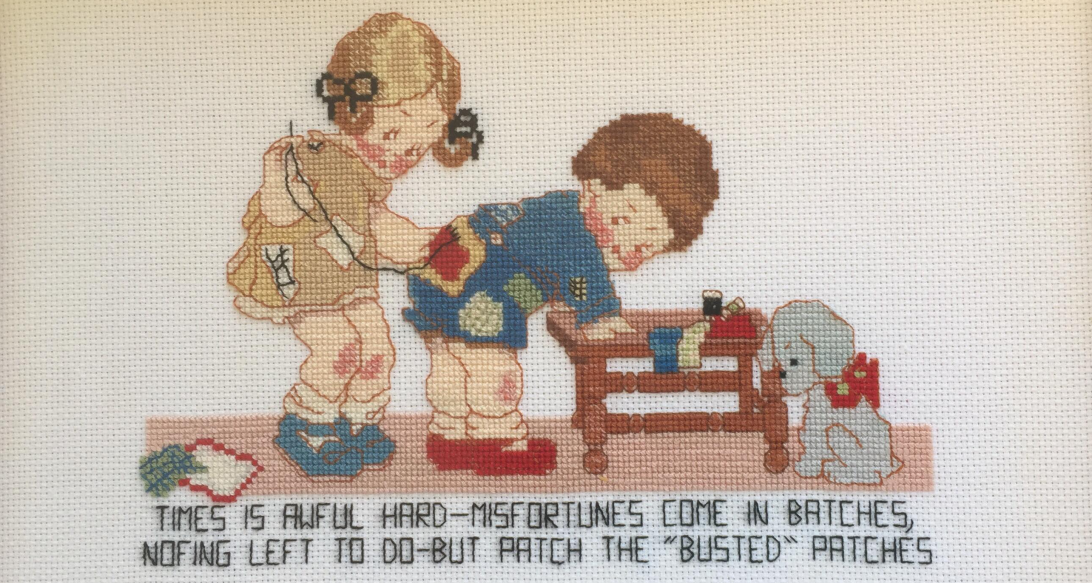The scream that goes through the house is the heartbeat that makes audible, at last, who we are, how resonant we are, how connected we are.
— Arnold Weinstein (2003)
Over the past few weeks I’ve been closely following The Haunted One on Twitter. This account has been set up for healthcare professionals to share difficult stories, specifically the traumatic, painful, and hard stuff they witness every day at work and that stays with them long after their shift is done. It interests me how these fragile stories are piling up and circulating through a space in which they do not comfortably reside. There have been several concerns raised about patient privacy and confidentiality, with some users questioning whether it’s appropriate to bring these stories into the public domain.
In her book Other People’s Stories (2005), Amy Shuman writes that stories need to travel beyond their owners to accomplish cultural work. We can see this in Patient Opinion, which focuses on making patients’ stories of healthcare experiences travel for improving services. The Haunted One does cultural work by providing a safe place for healthcare professionals to expose their vulnerable selves, something which is not typically encouraged in the culture of medicine.
Shuman also talks about the fault lines that crack open when stories travel. By fault lines, she means the sorts of ethical quagmires that stories can fall into on their paths. For example, Patient Opinion has been criticised for its slicing and dicing approach to moderating the stories that pass through its feedback system. The privacy and confidentiality issues that The Haunted One has been wrestling with are essentially a question of who has the right to tell which stories under what circumstances, issues of what Shuman calls entitlement to acts of narration. Claiming entitlement to the stories posted on The Haunted One is complicated because they are each, as Cathy Caruth (1996) puts it, “the story of the way in which one’s own trauma is tied up with the trauma of another”. This places storytellers in a catch-22 position: telling hard stories might make a better world, but they are never just our own to tell.
The Haunted One is a powerful reminder that patients, families, and healthcare professionals are not separate storytelling entities, even though much research treats them this way. The storytelling that takes place in healthcare is a product of the intersections of lives and the entanglement of experiences that brings patients, families, and healthcare professionals together in a storied web. This is why it’s important to be mindful of our responsibilities when telling stories about health, illness, and care that are inevitably entwined with the lives of others.
What I also find appealing about The Haunted One is that it challenges the way we see healthcare professionals. As Paul Atkinson (1997) has said of illness narratives, patients are typically represented as the victims, and medical staff as the villains. In many of the academic papers I’ve read, patients’ storylines are analysed to reveal the absence of compassion, sensitivity, and respect in clinical environments. Often, healthcare professionals are viewed as uncaring and disengaged and are found to ignore and dismiss patients’ suffering and keep families at arm’s length. However, The Haunted One presents a completely different picture. It unveils the basic humanity of healthcare professionals as people who care about the patients they care for, whose hearts bleed and eyes weep for them, and who carry their wounds and losses with them.
The Haunted One is a small but significant step towards humanising healthcare because it facilitates, in the words of literary scholar Arnold Weinstein (2003), “a world that is linked and meshed, a world in which pain and feeling bind us rather than divide us, an ecosystem that flaunts the primacy of emotion itself as a human bridge.” And, as a growing researcher trying to learn my way around this vast field, it has shown me the importance of understanding what it means to experience healthcare from both inside and outside the clinic doors.
References
Atkinson, P 1997, ‘Narrative Turn or Blind Alley?’, Qualitative Health Research, vol.7, no.3, pp.325-44.
Caruth, C 1996, Unclaimed Experience: Trauma, Narrative, and History, Johns Hopkins University Press, Baltimore.
Shuman, A 2005, Other People’s Stories: Entitlement Claims and the Critique of Empathy, University of Illinois Press, Urbana.
Weinstein, A 2003, A Scream Goes Through the House: What Literature Teaches Us About Life, Random House, New York.
